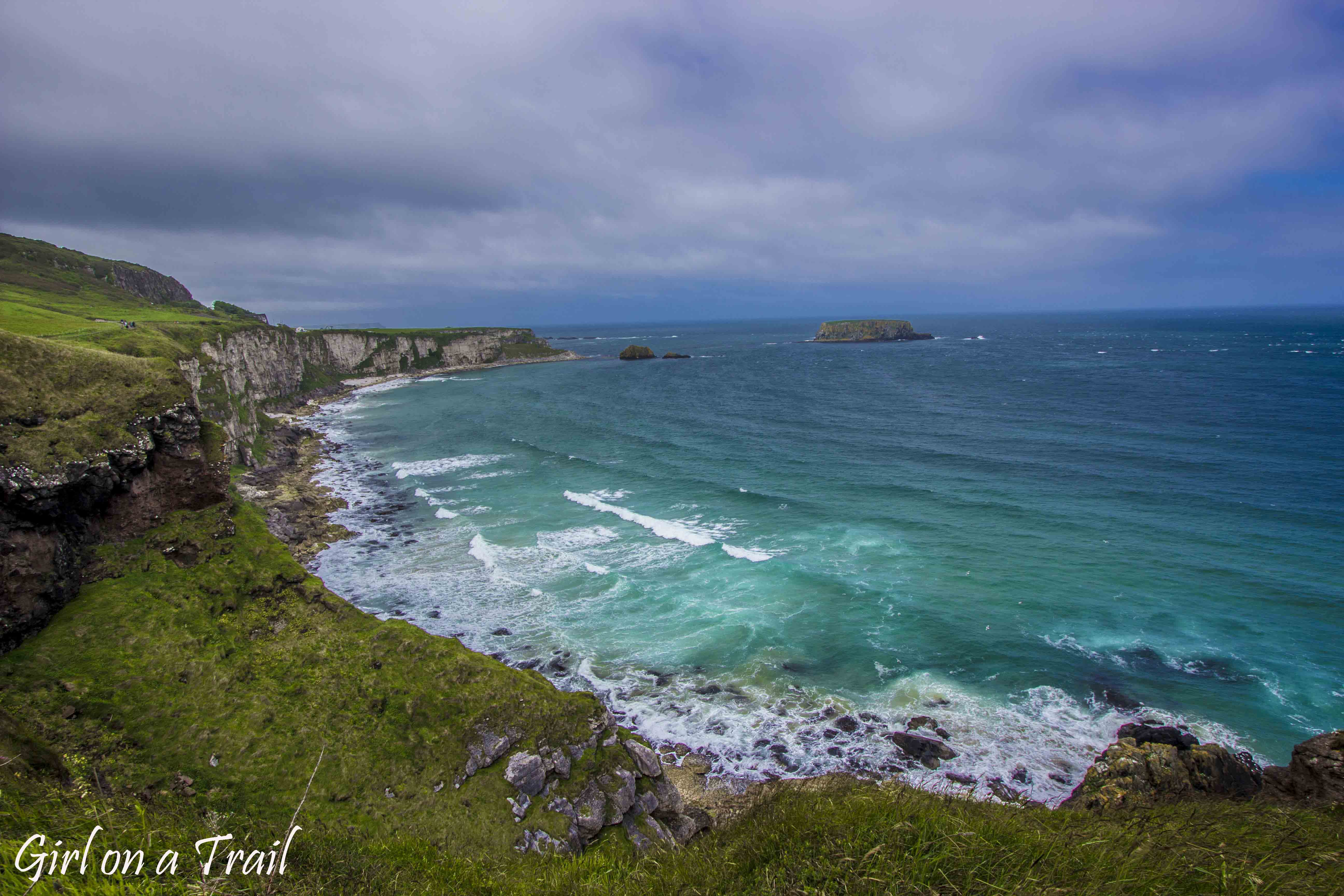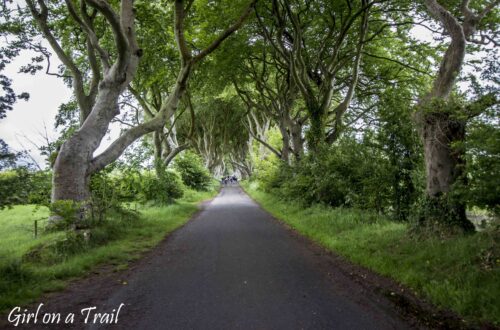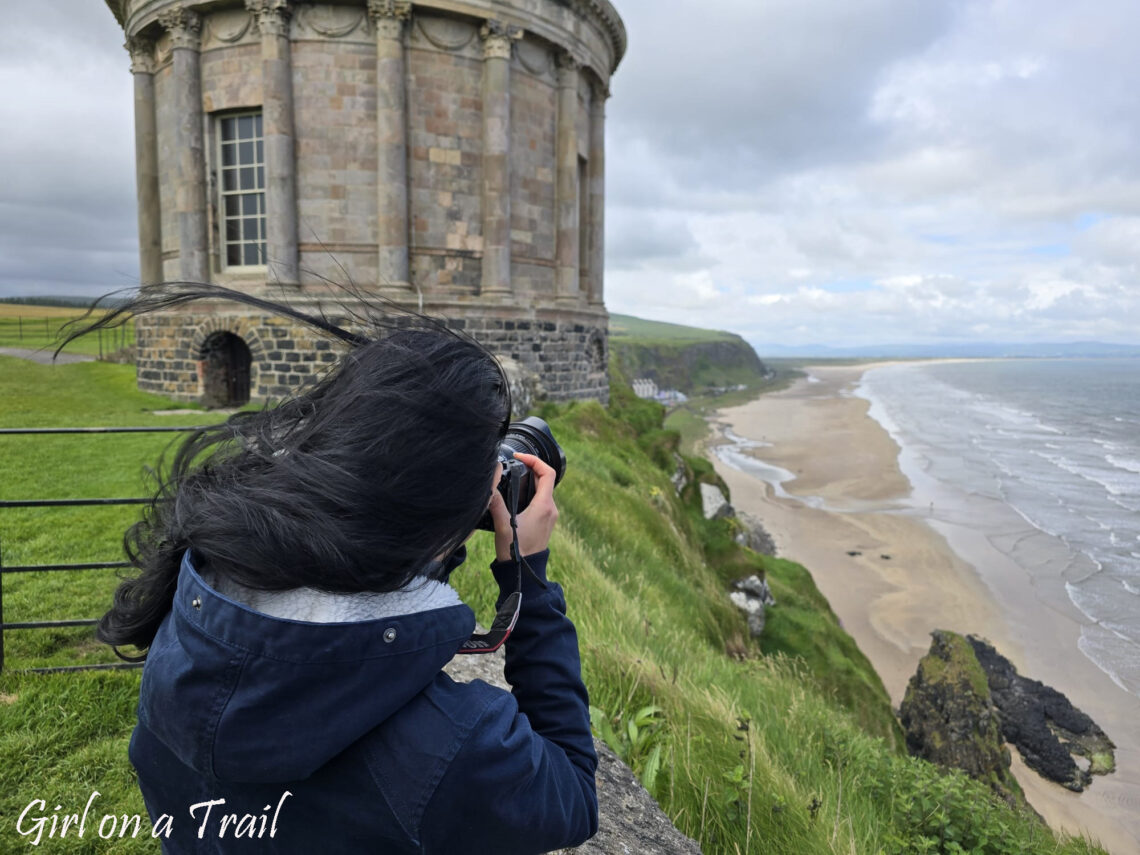
The Causeway Coastal Route – Northern Ireland
The Causeway Coastal Route in Northern Ireland is one of the most beautiful scenic drives in Europe. This picturesque road stretches almost 200 km, winding through cliffside coasts, green hills and the historic castles of the Emerald Isle.
Mussenden Temple – the first stop on the way
The first stop is the picturesque Mussenden Temple. This remarkable structure, inspired by Roman temples, was commissioned by a wealthy earl who wished to create his private library here. From the outset, Mussenden Temple has captivated visitors not only with its architecture but also its spectacular cliff-top location. Unfortunately, this location carried the risk of erosion and potential collapse of the building. In 1997, due to the cliff’s unstable condition, intensive efforts were undertaken to restore its stability.
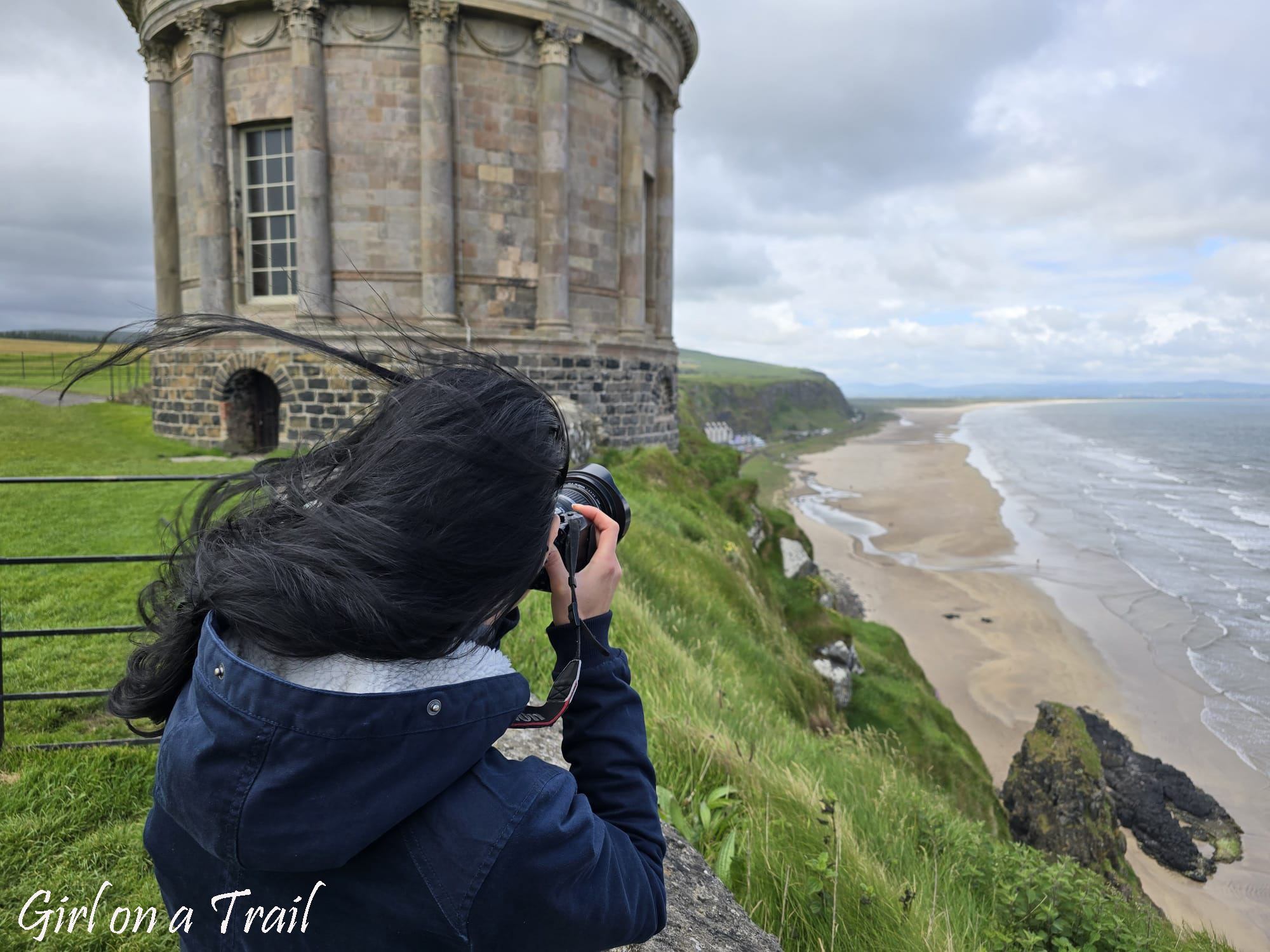
Although the interior of the Temple is currently closed to visitors, its location is breathtaking. The picturesque landscape from the cliff is the sufficient reason to visit this place.
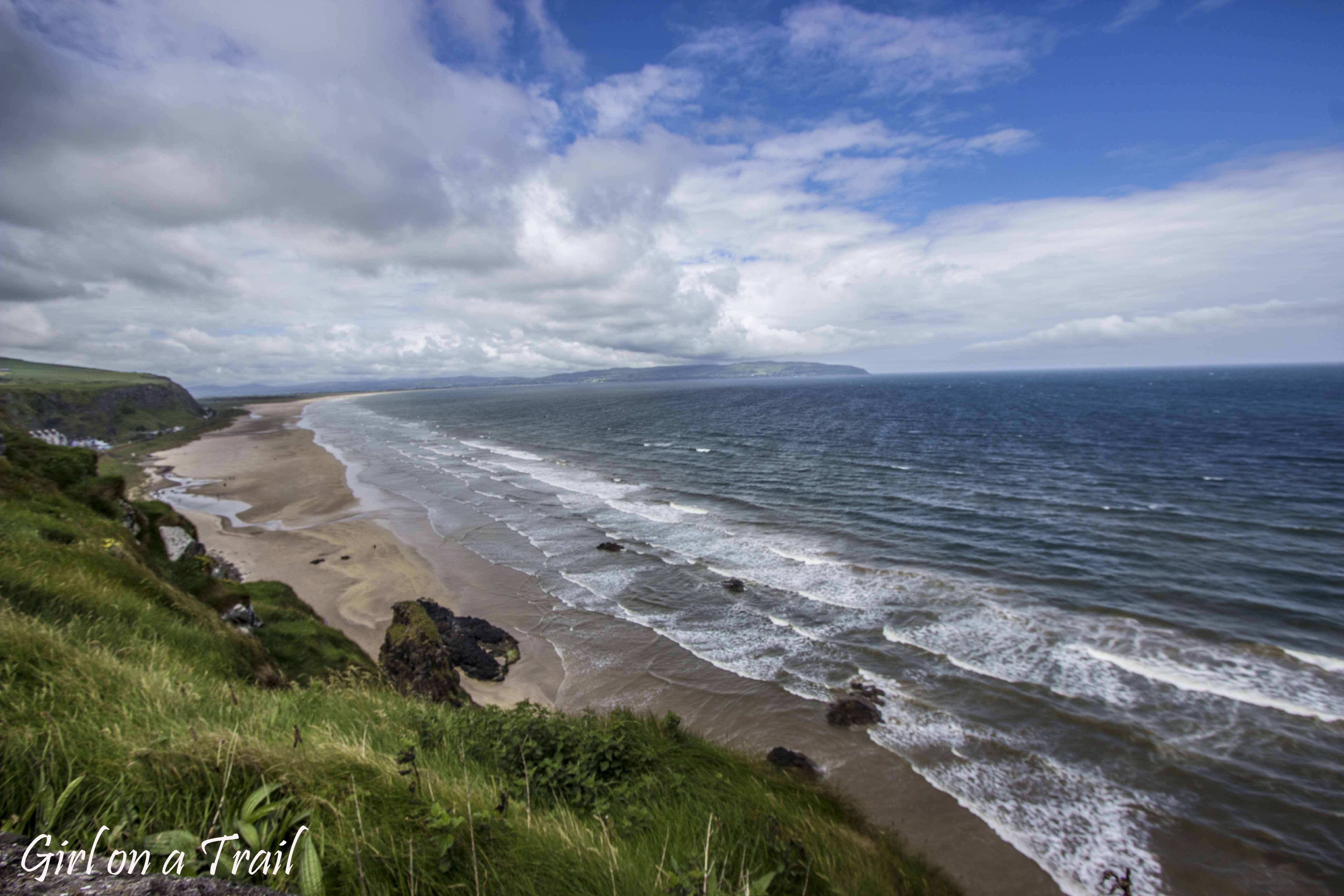
Near the Temple, you can see the ruins of Downhill House, also known as Downhill Demesne. The house was built in the 1770s by an eccentric bishop. The bishop was known for his passion for art and architecture, evident in the monumental structure and unique style of the residence. Unfortunately, due to a fire in 1851 and subsequent neglect, the house fell into ruin, but its remnants still make a profound impression.

Portrush – Colorful Houses and the Wishing Arc
Continuing along the coast towards the east, it’s worth making a brief stop in the charming town of Portrush. This place is famous for its wide beach and colorful row of terraced houses.

Just beyond Portrush, you’ll find the viewpoint known as The Wishing Arch, from which you can admire the incredible panorama of the Irish coastline.
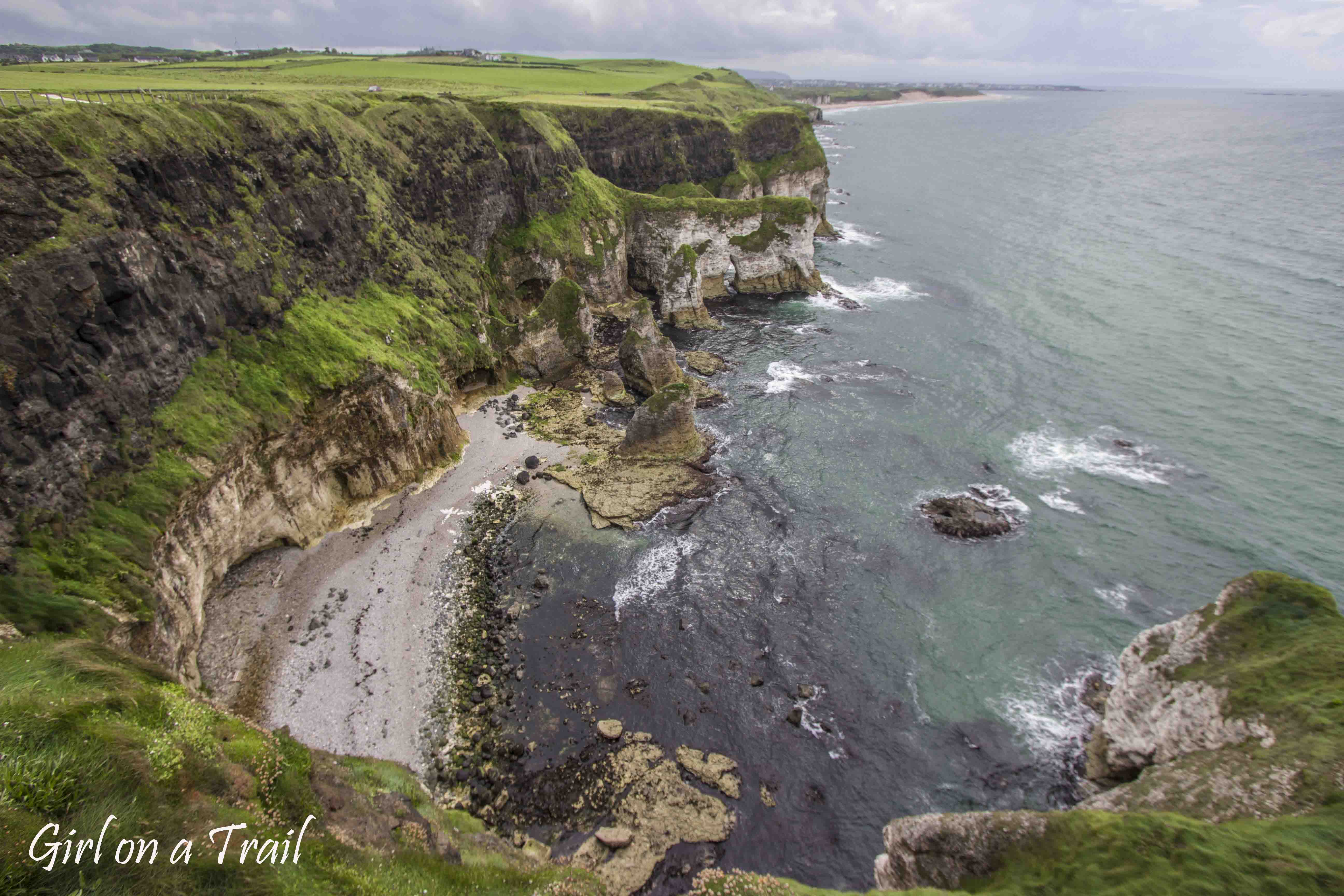
Bushmills: A Visit to the Kingdom of Whiskey
Of course, a tour of Northern Ireland wouldn’t be complete without a visit to the town of Bushmills. This small, unassuming town is renowned for being home to one of the oldest whiskey distilleries in the world. Established in 1608, Bushmills is a major export product of Northern Ireland. Whiskey is such an integral symbol of the Emerald Isle that it is featured on Irish banknotes.
At the distillery, you can witness the entire whiskey production process, starting from fermentation, through triple distillation and maturation, to the bottling process. Bushmills prides itself on its unique, delicate flavour achieved through triple distillation. The tour culminates in a tasting session, where you can even sample a 21-year-old whiskey, which can cost up to £160 per bottle. Unfortunately, as the driver, I could only enjoy the aroma of the whiskey.
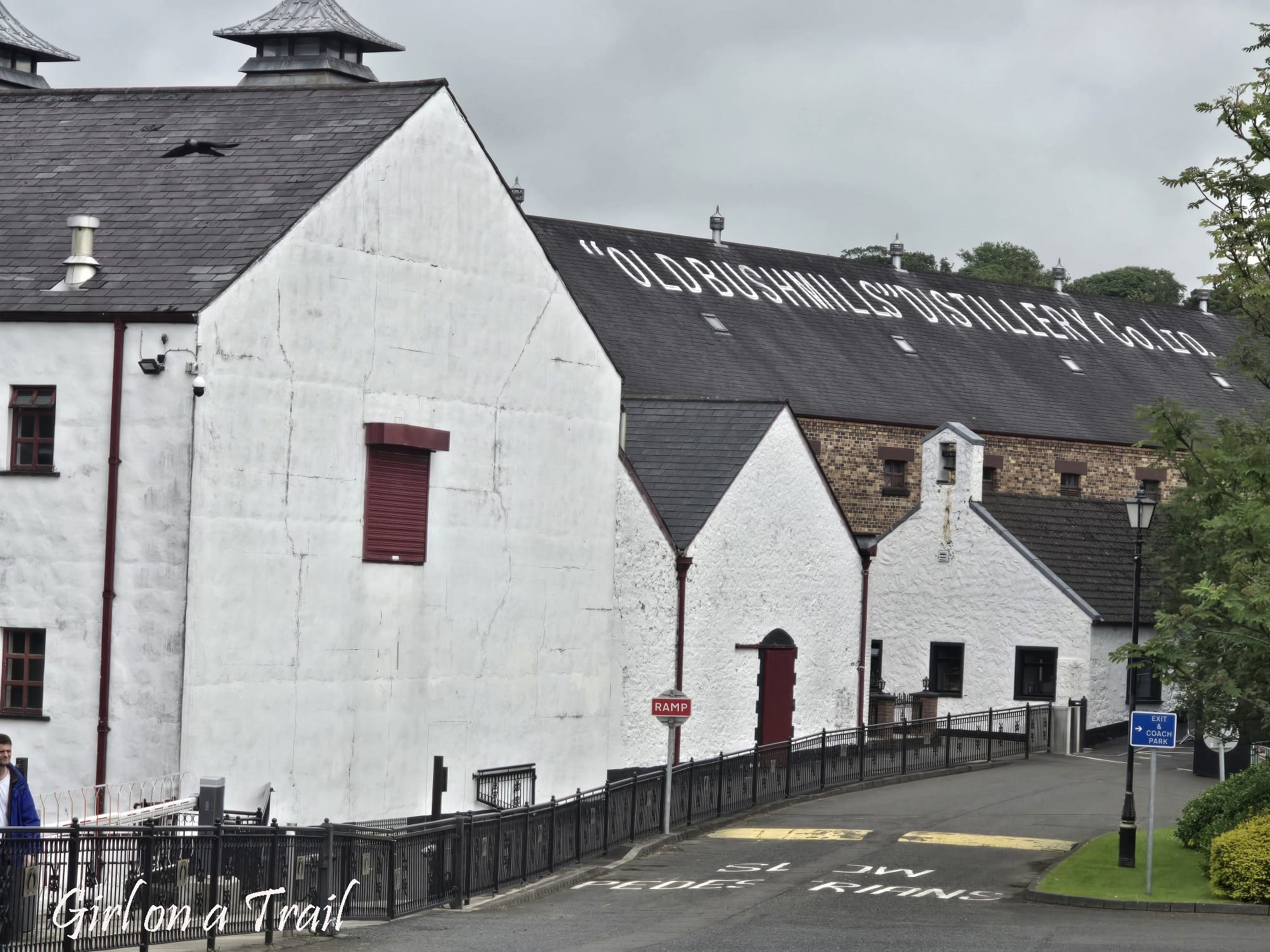
Giant’s Causeway
The town of Bushmills is close to one of the greatest attractions of the coast – Giant’s Causeway. It is a must-see during a visit to Northern Ireland. Giant’s Causeway appears as an intricately laid path of thousands of hexagonal basalt columns. This unusual rock formation was created 50-60 million years ago during the Paleogene period, when intense volcanic activity led to the eruption of basaltic lava. As the lava cooled, it cracked into characteristic, polygonal columns that we can admire today.
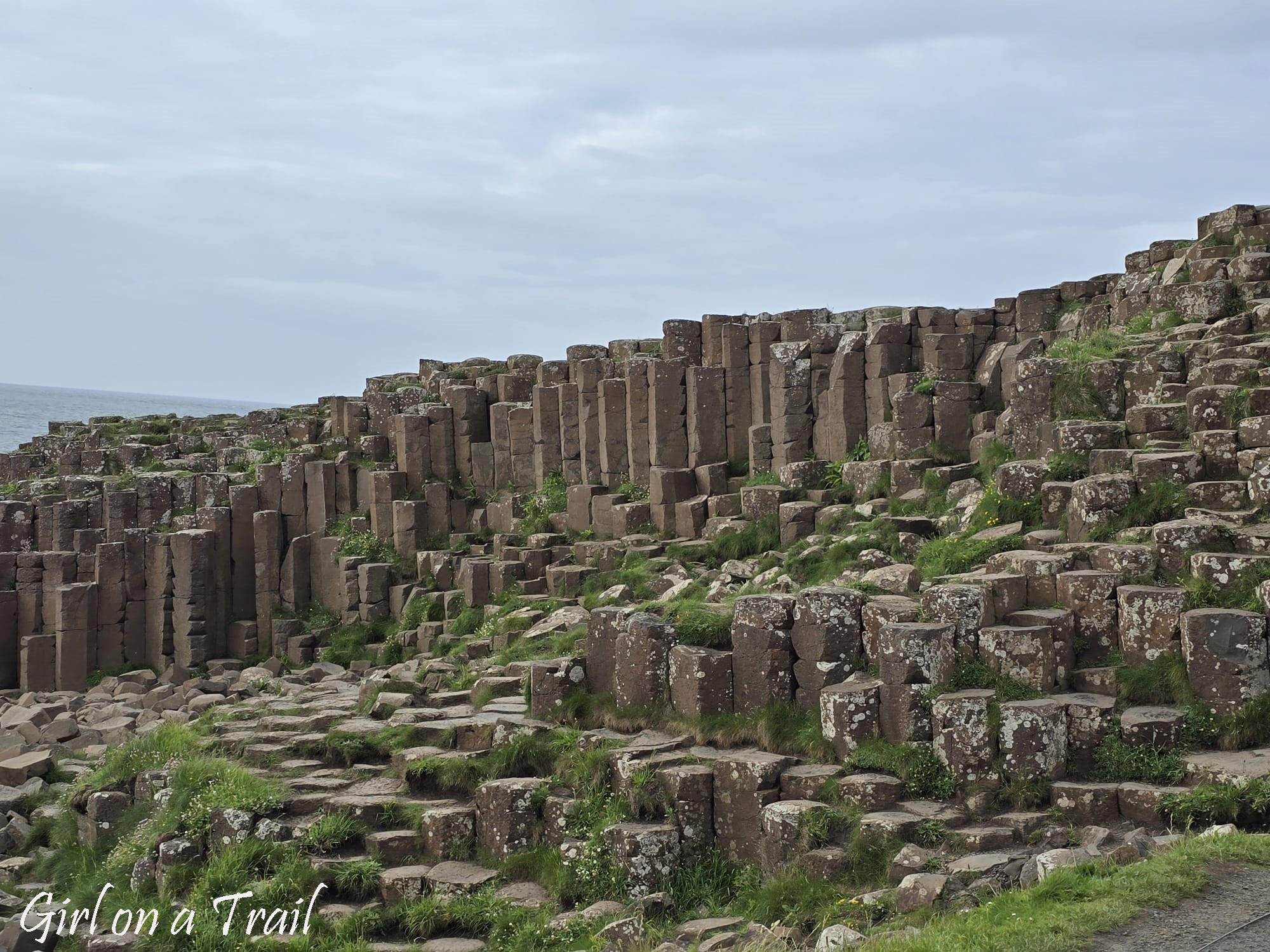
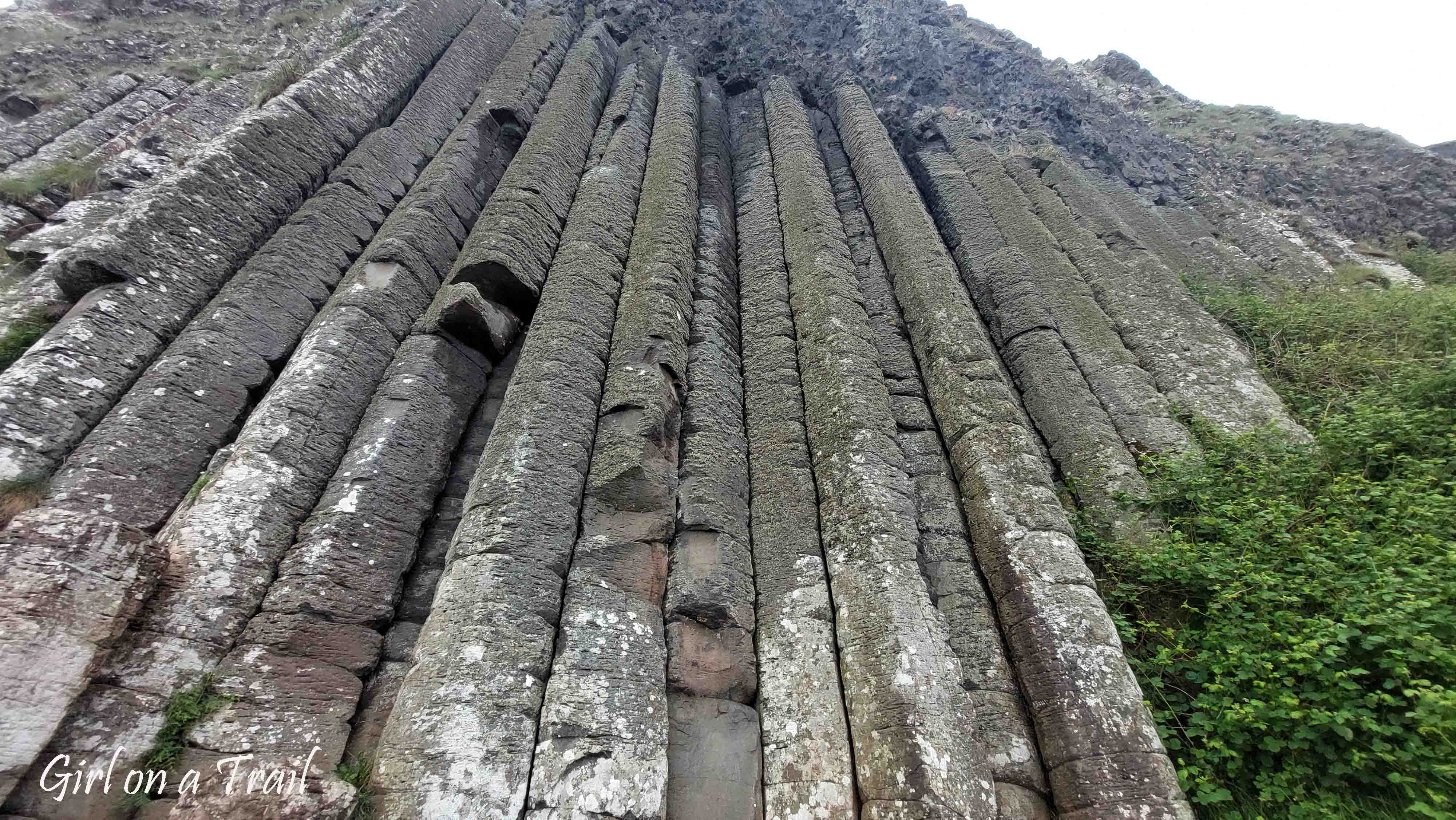
Giant’s Causeway is not only extraordinary rock formations but also amazing views of the coastline. The cliffs surrounding this place add dramatic character and charm to it.

To reach Giant’s Causeway, the most convenient way is by car. There’s parking right by the trail, which costs £10. Alternatively, you can take bus route 402 from Bushmills. Buses depart from Main Street, and you can park at the Park&Ride. It’s good to know that access to the trail is free for visitors. However, visiting to the Visitor Center, which offers interactive exhibitions explaining both legends and scientific facts about the site, requires an entry fee. Admission costs around £16 per person (£8 discount ticket) as of 2024. This ticket also includes parking and an audio guide. Many people unintentionally pay this amount, thinking it covers walking trail which is free. Guided tours are also available on-site for those interested in gaining a deeper understanding of the history and geology of this unique place. Further information can be found here.
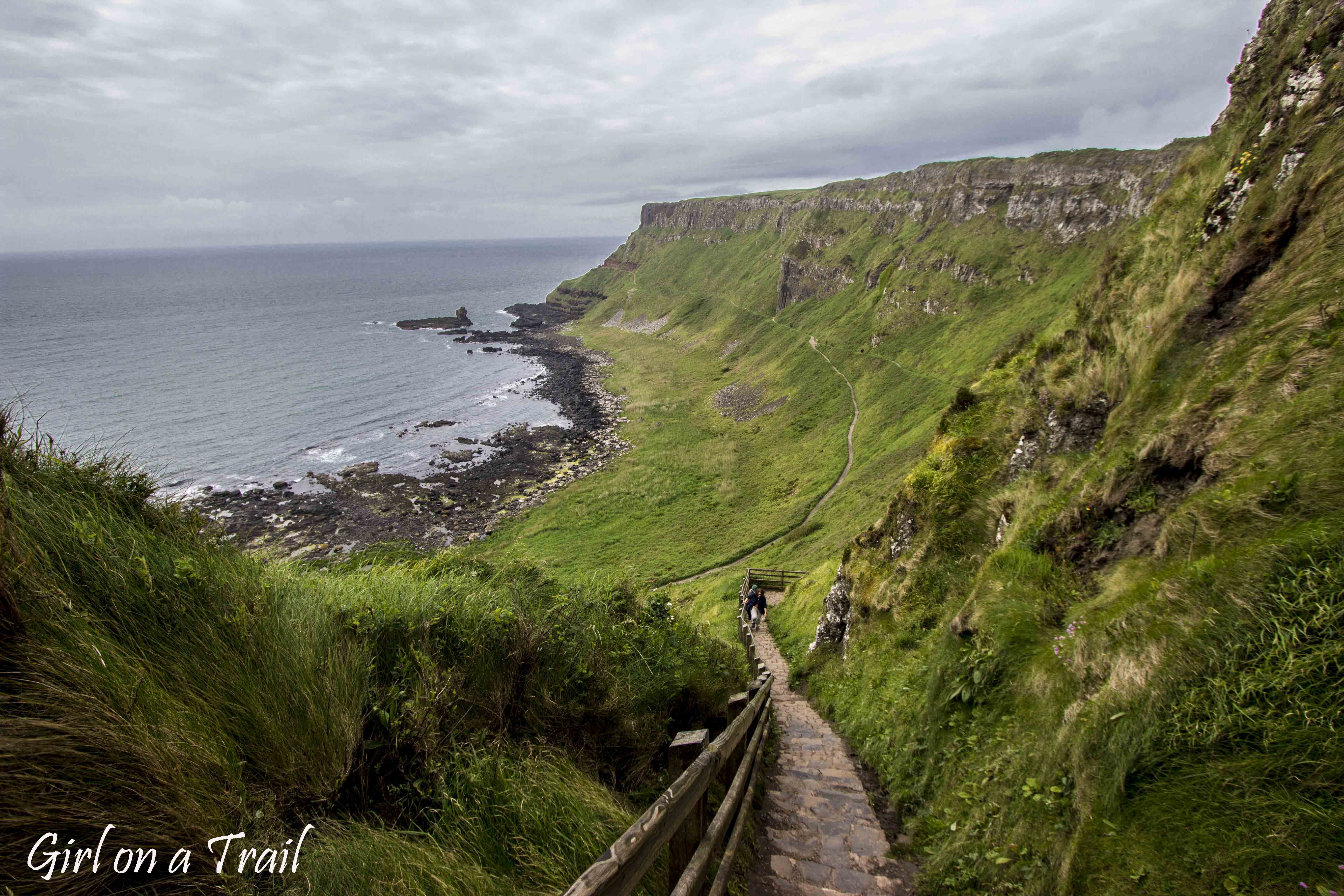
Ruins of a Castle on the Green Cliff
Another attraction of the northern coast is located just a 10-minute drive from Giant’s Causeway. These are the ruins of Dunseverick Castle, which history dates back to the 5th century. The castle was repeatedly attacked by Vikings and destroyed by the Scottish army in the mid-17th century. Supposedly it hasn’t been rebuilt since then.
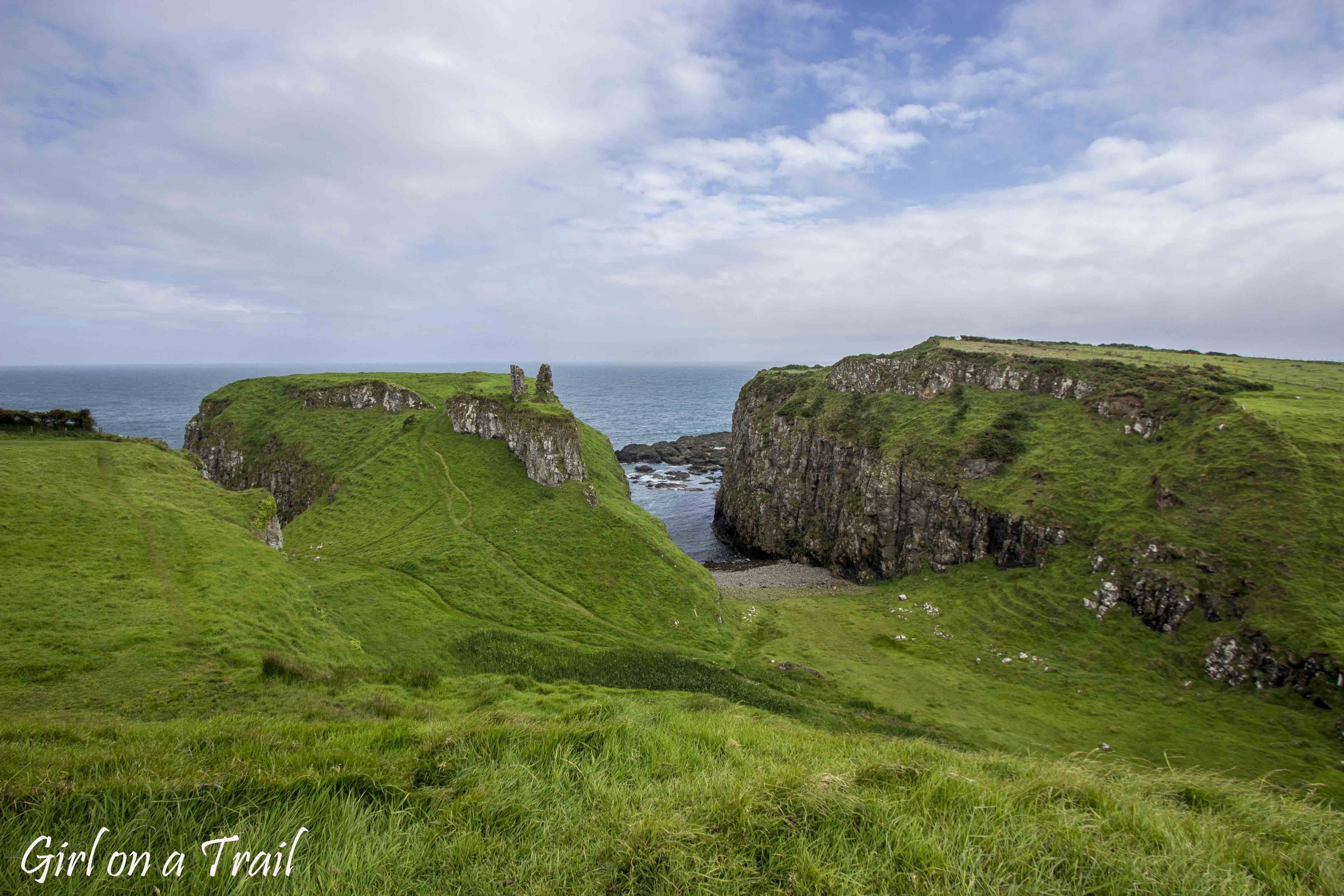
Continuing further east, it’s worth making a short stop at the viewpoint overlooking White Park Bay. Regardless of the weather, the incredible view of the coastline is guaranteed!
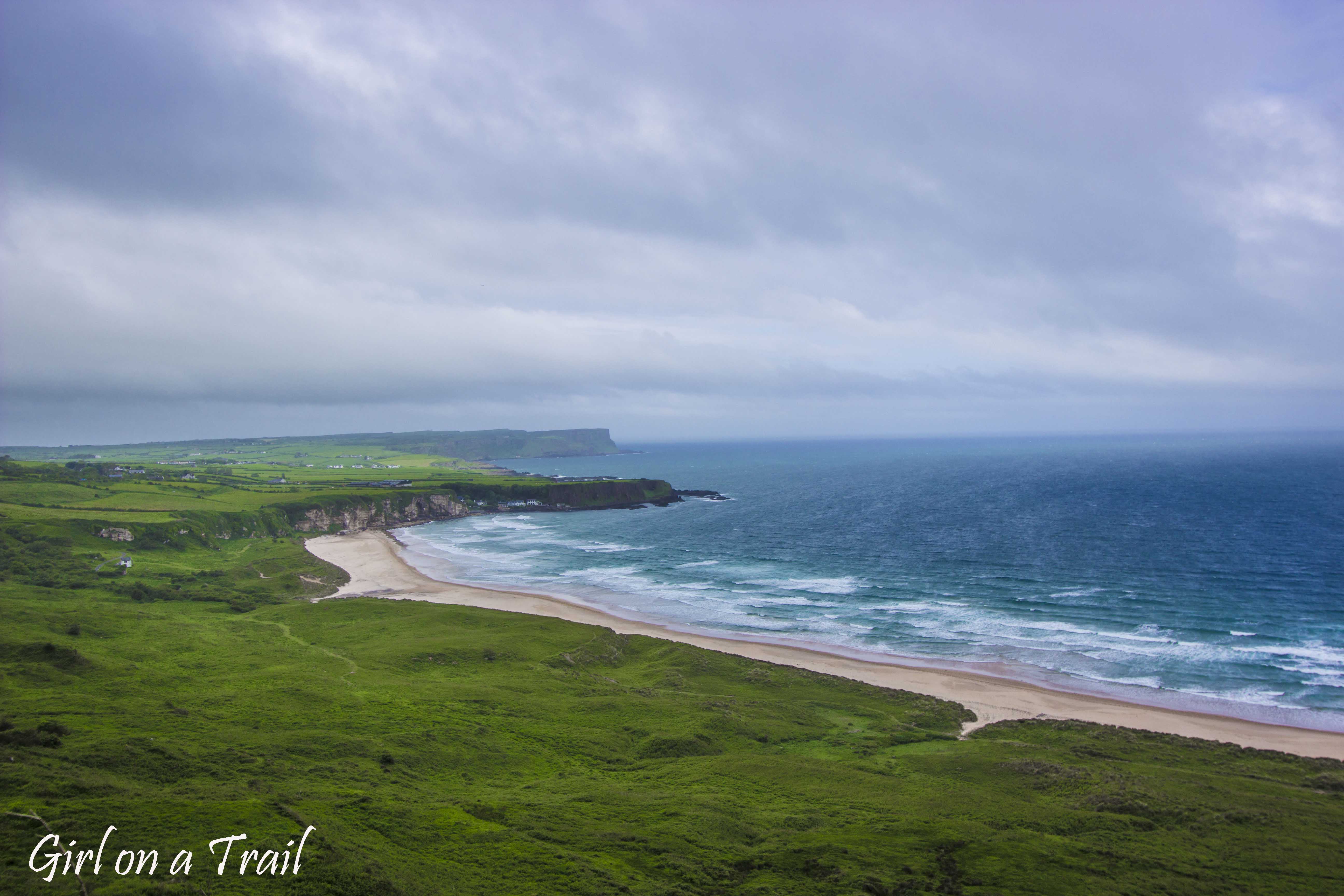
Adventurers seeking unforgettable experiences will certainly not be disappointed with the Carrick-a-Rede Rope Bridge. This famous rope bridge spans a deep chasm, offering not only thrills and adrenaline but also spectacular views of the coastline and surrounding cliffs.

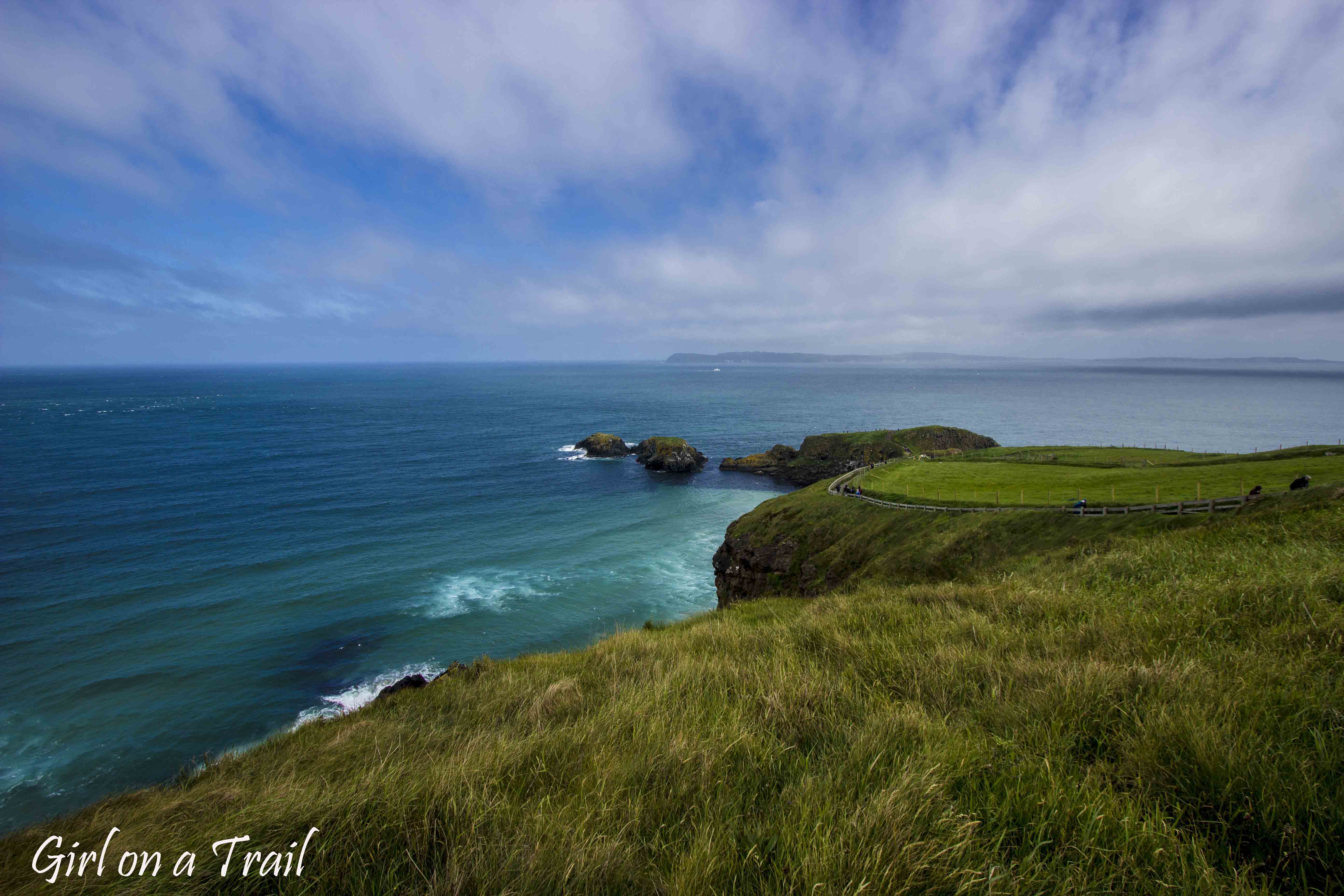
The suspension bridge is 30 meters above the rocks and connects the small island of Carrickarede to the mainland. It’s considered one of the most dangerous bridges in the world, primarily because its structure is not very stable during high winds. The bridge is now solely a tourist attraction, but for centuries it was used by local fishermen. Built in 1755, its original construction was quite makeshift, consisting only of wooden planks stretched across the chasm, with a single handrail rope. The current structure has been reinforced to allow relatively safe passage. However, on very windy days, the bridge is closed for safety reasons.
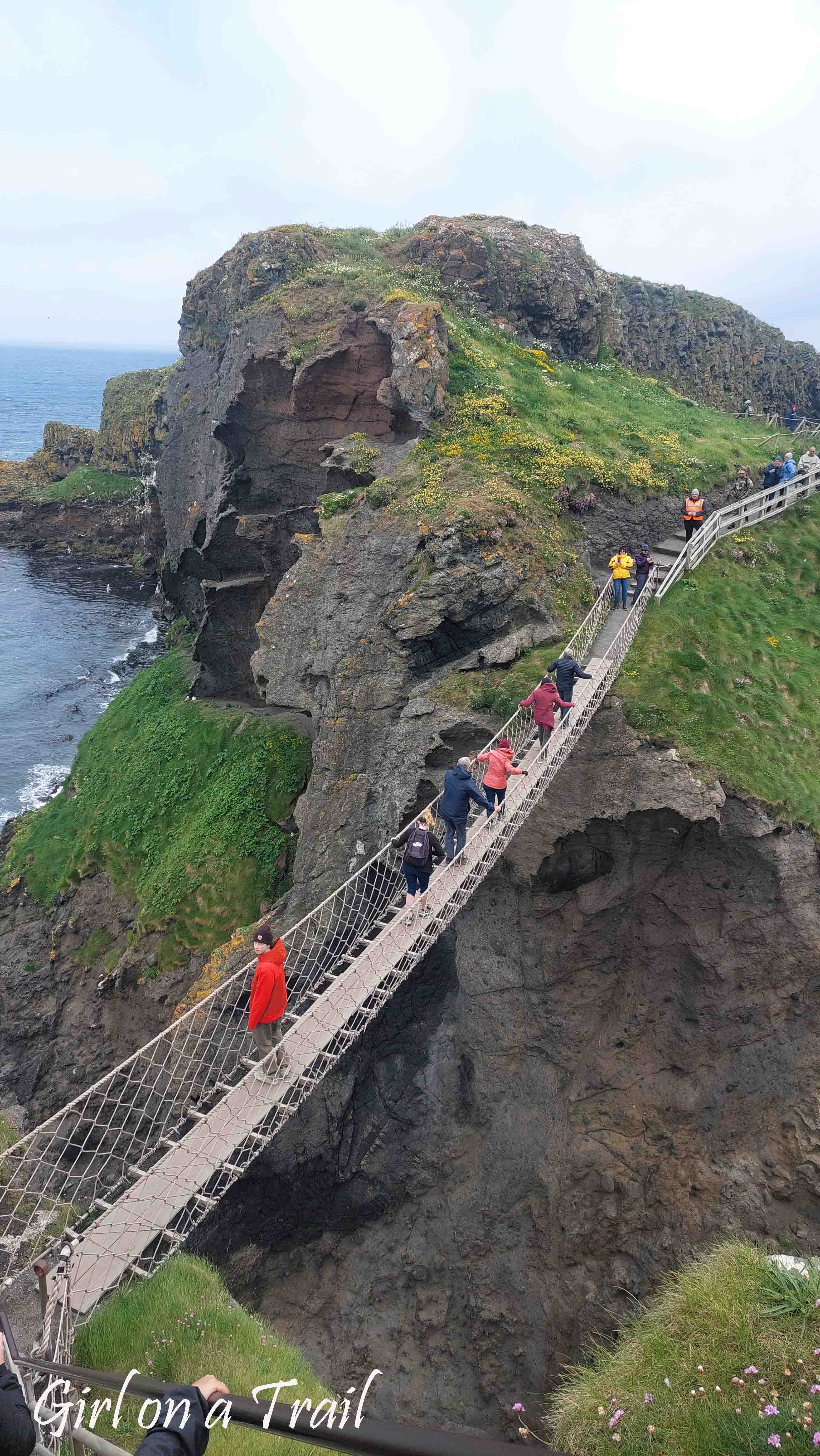
Practical Information:
The bridge is open from spring to autumn, but it’s advisable to check current opening hours before your visit as they may vary depending on the season and weather conditions. There’s an entrance fee for the bridge, and tickets can be purchased online or on-site. It is recommended to buy tickets in advance, especially during the tourist season.
Castle – White Head
One of the advantages of the Causeway Coastal Route is that attractions are located within about a 10-minute drive from each other. Such a short drive from Carrick-a-Rede Rope Bridge is enough to see the ruins of Kinbane Castle. Kinbane Castle was built in 1547 by Colla MacDonnell of the Scottish MacDonnell clan, lords of the Western Isles of Scotland. The only access point was a descent down the basalt cliff, as the castle was nearly inaccessible from the sea side. Over the centuries, the castle changed hands several times, and local tradition suggests it may have been inhabited until the 18th century. The name “Kinbane” comes from the Irish “Ceinn Bán,” meaning “white head,” which refers to the rocky limestone headland on top of which the castle sits. From the viewpoint terrace, you can also admire the spectacular cliffs and the nearby Rathlin Island.
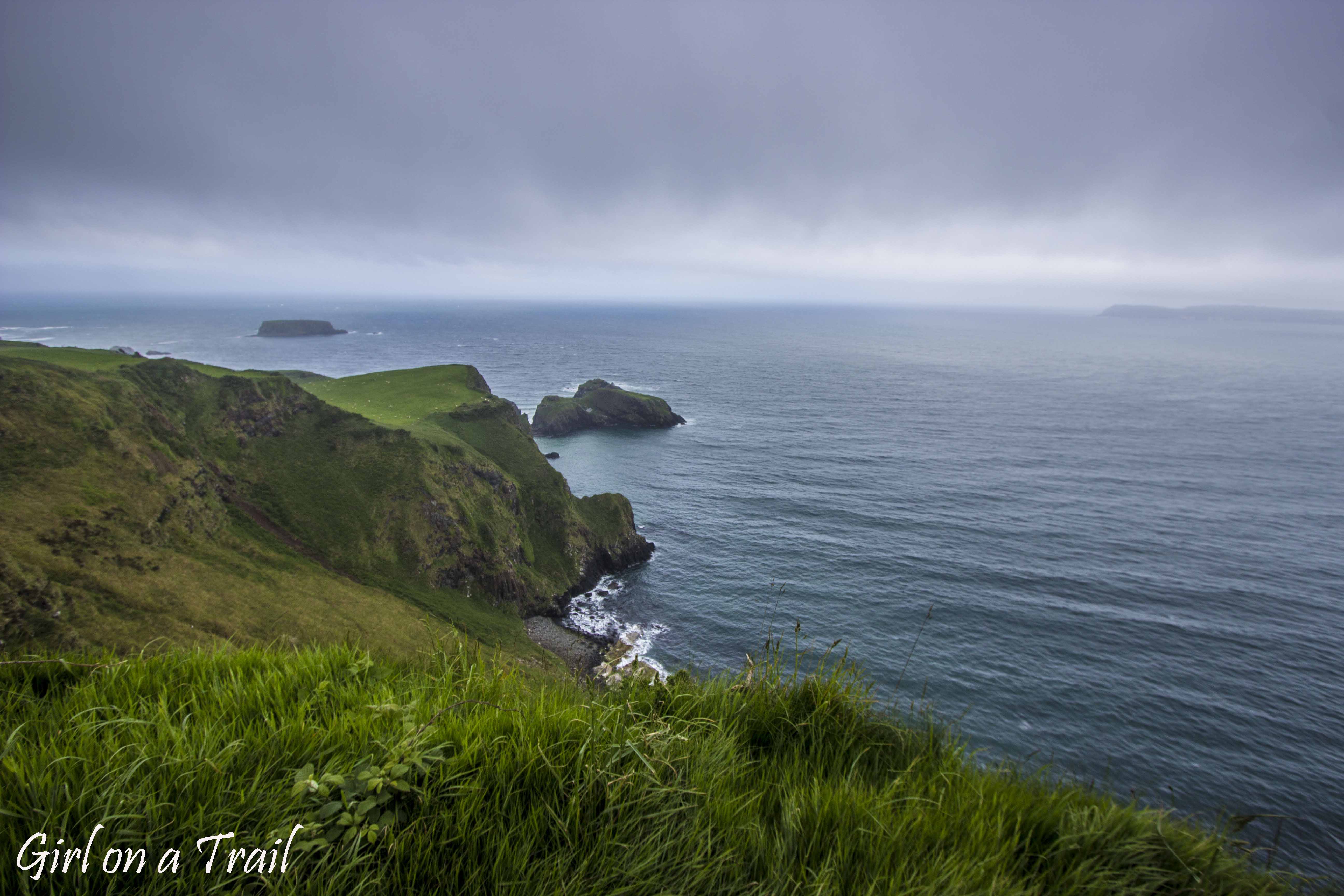
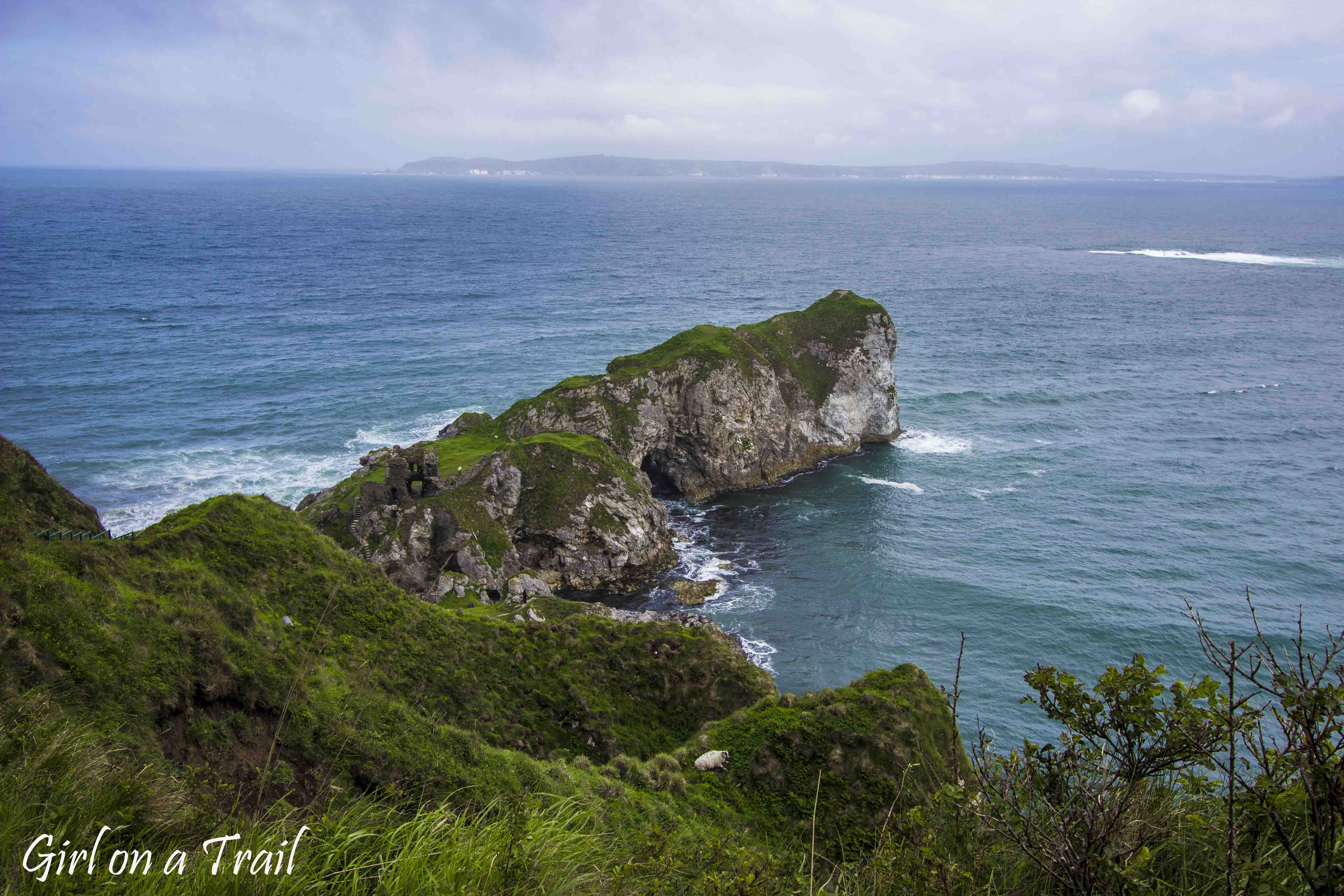
The Fair Head – Cliffs Overlooking the Island
A bit further along is the walking area known as The Fair Head. The Fair Head boasts the highest basalt cliffs in Northern Ireland, reaching heights of up to 200 meters. These cliffs stretch for several kilometers, forming a picturesque landscape that attracts tourists. From here, you can see spectacular views, including the nearby island of Rathlin in all its splendour.
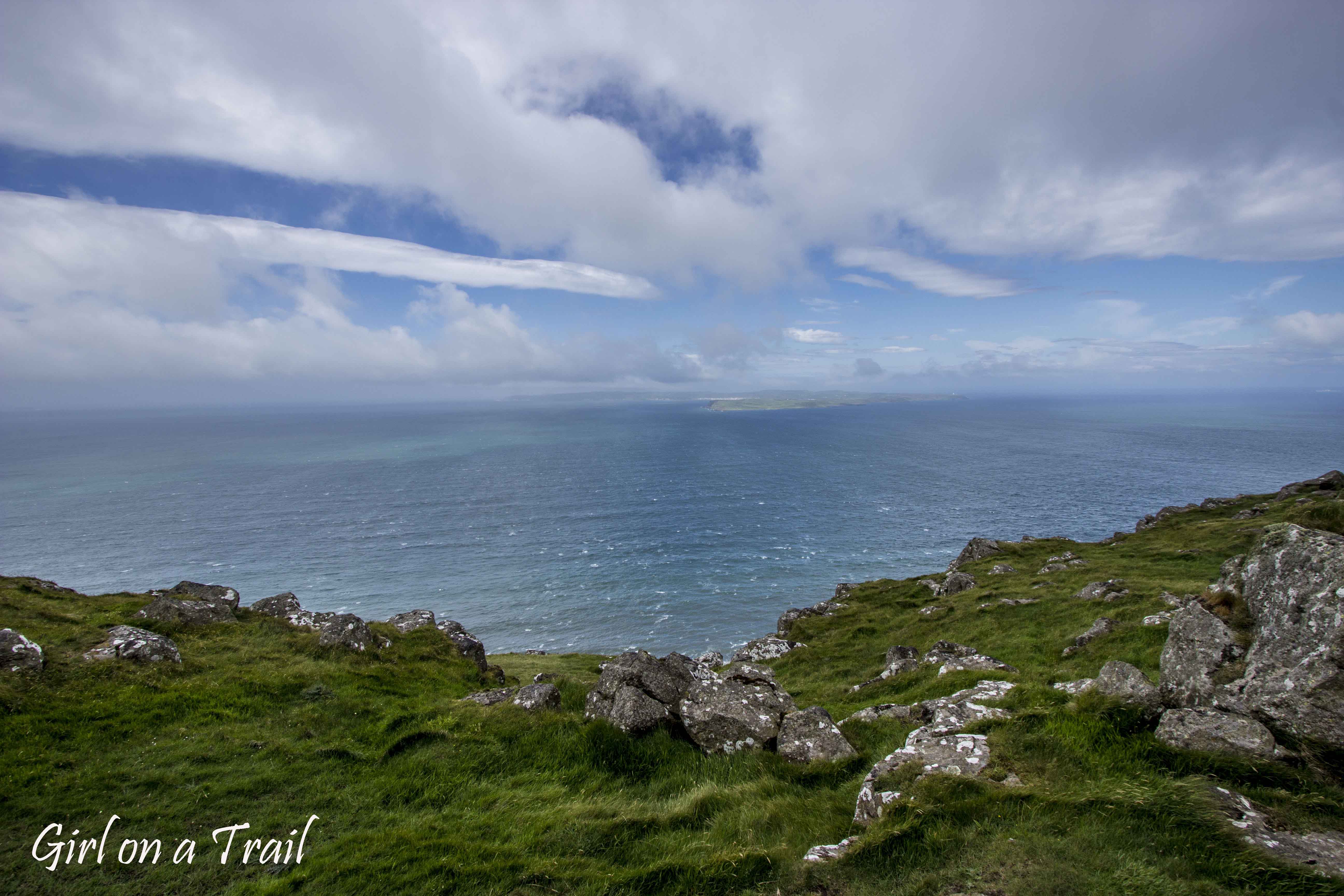
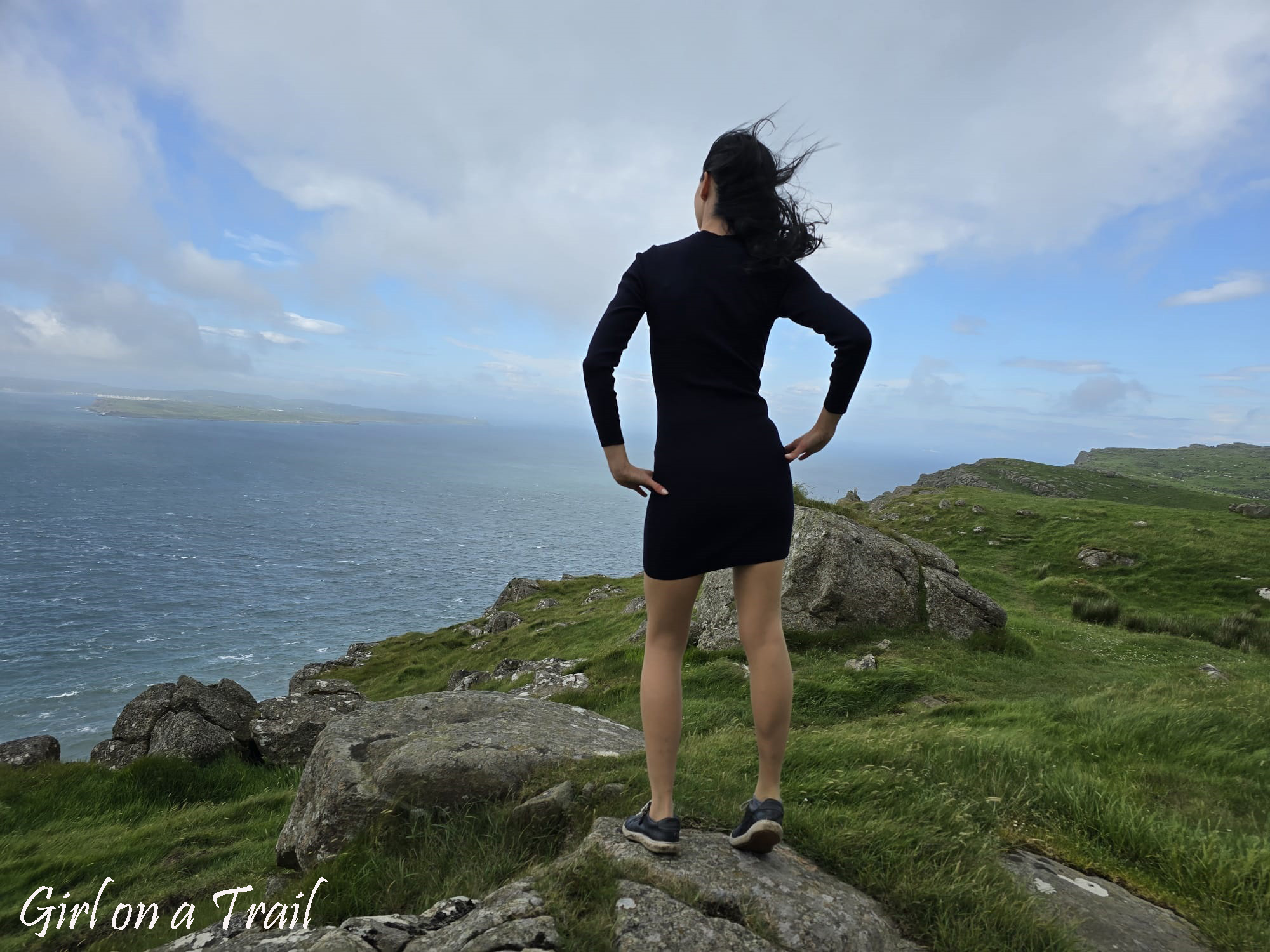
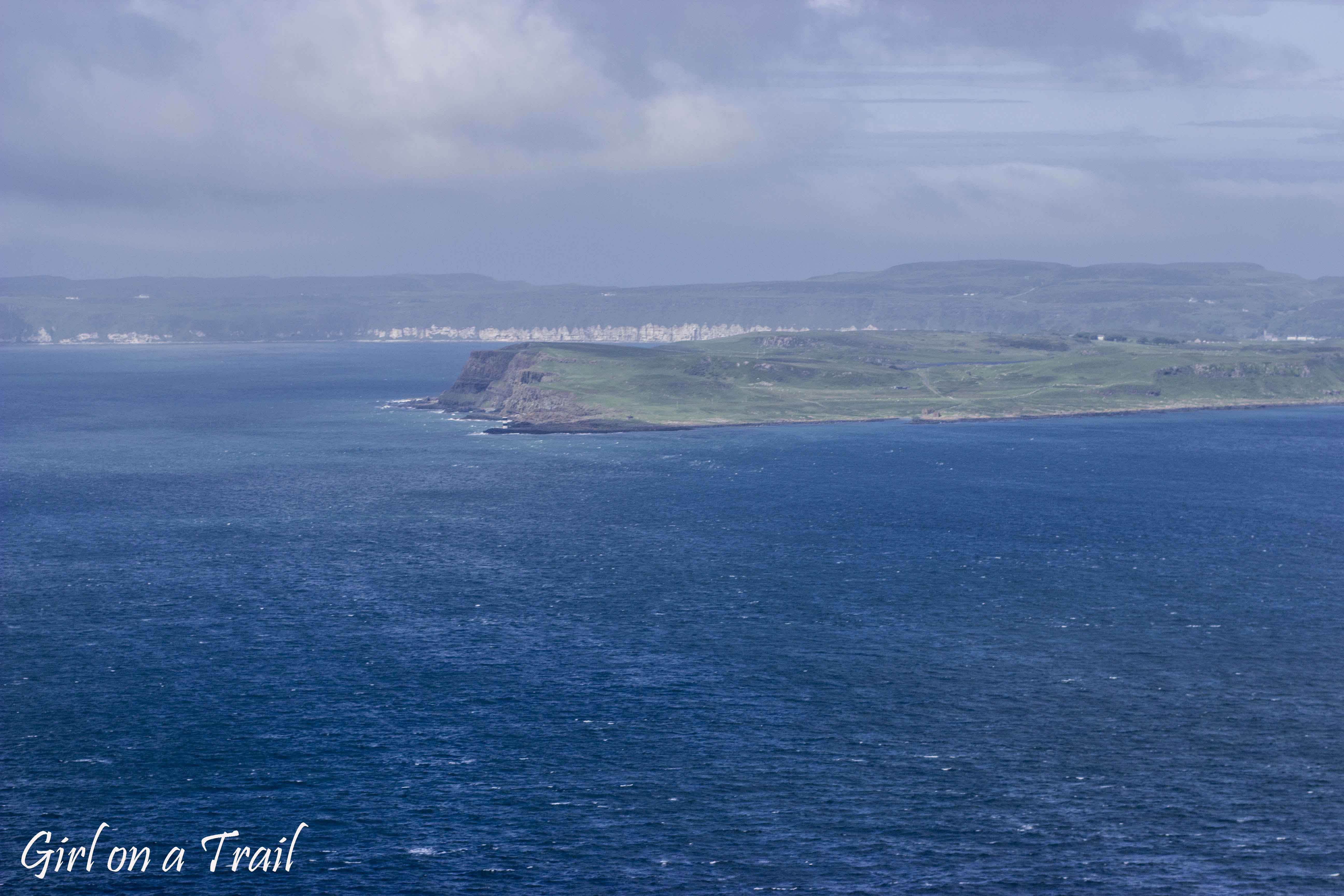
Amazing views are also guaranteed from nearby Torr Head. The name Torr in the local Gaelic language means a mound. Torr Head is the furthest point the closest to Scotland. In 1822, a coastguard station was built at the top of the cliff, the ruins of which can be seen today. A steep uphill road leads to the station. From the summit, you can enjoy an incredible view of the coastline.
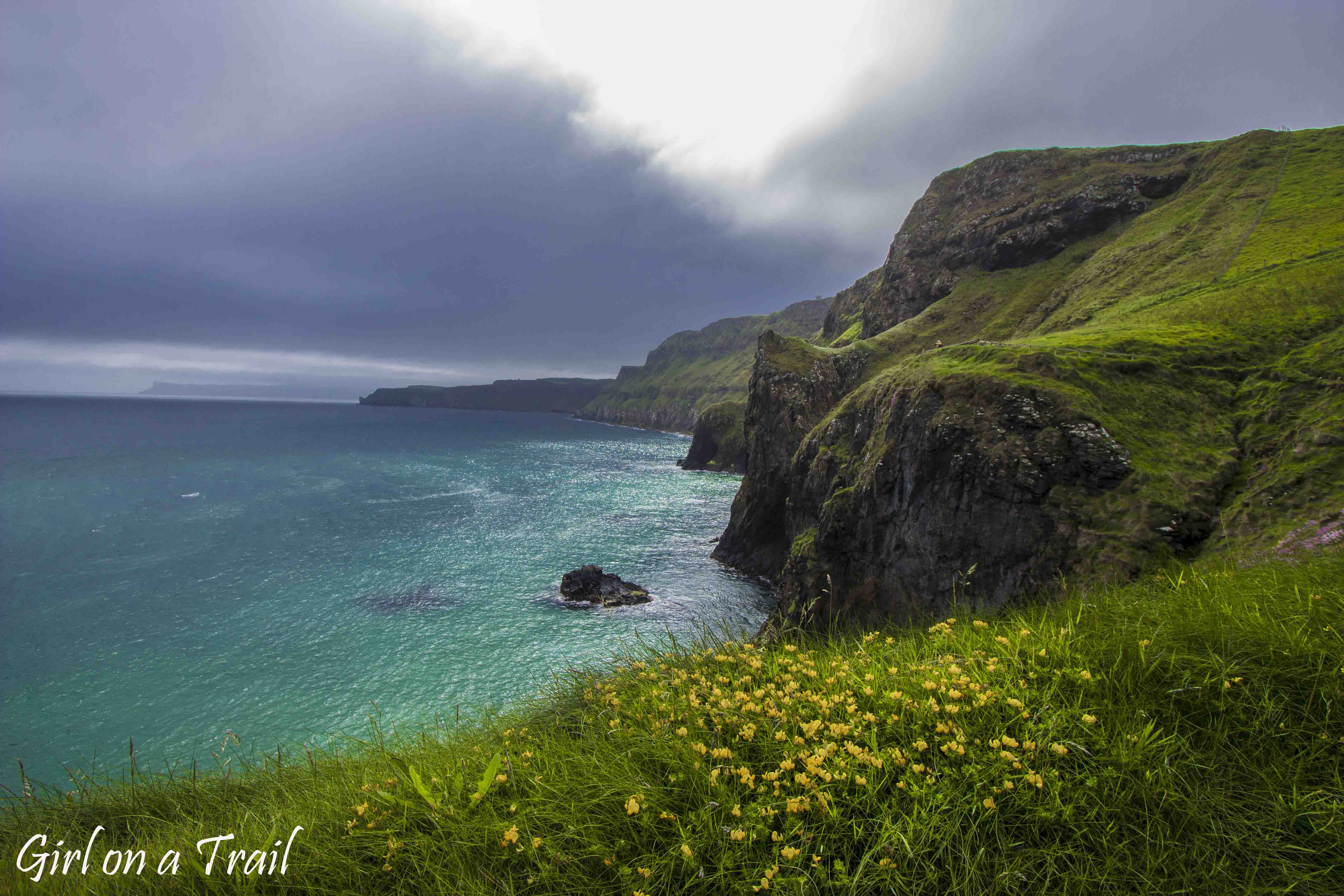
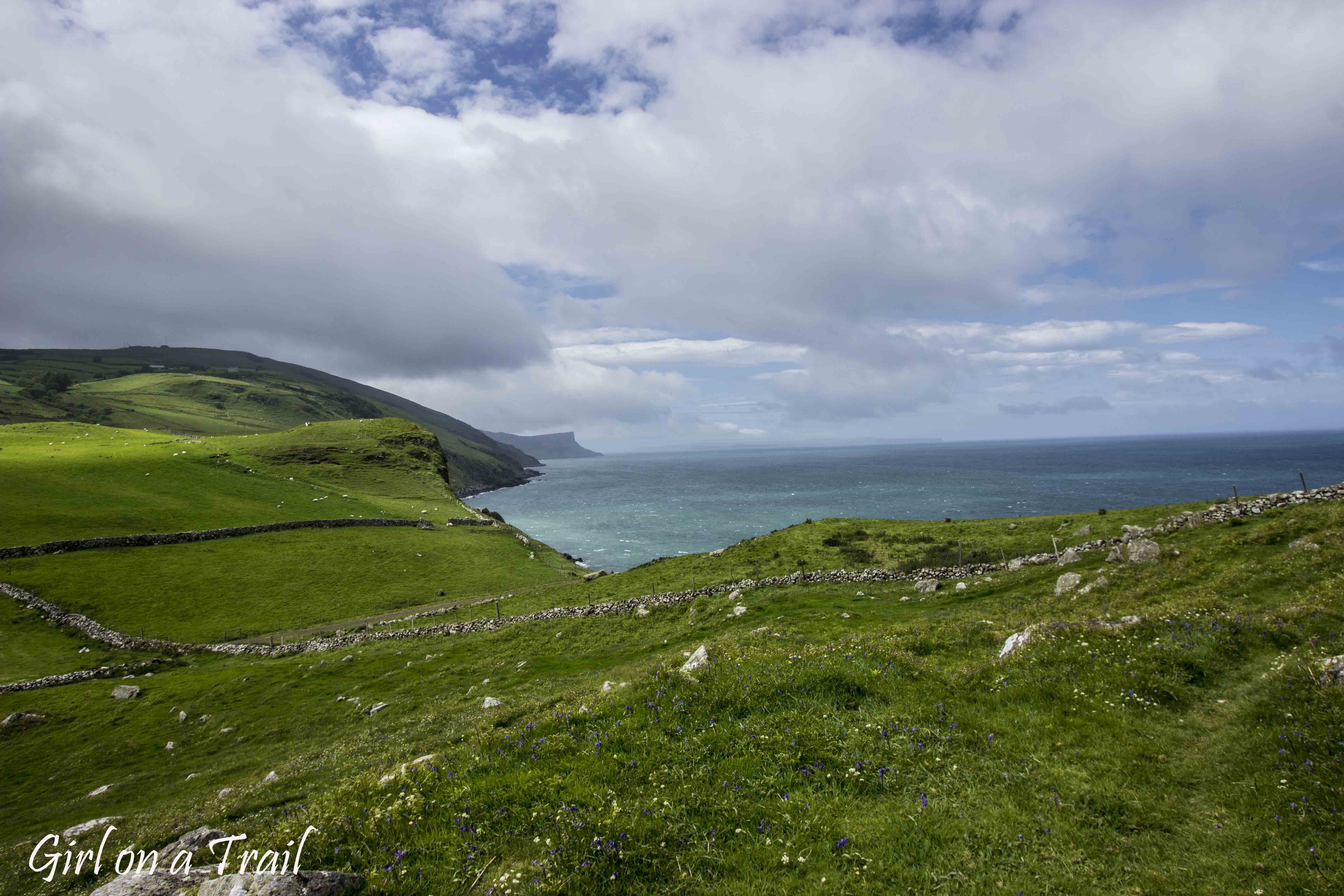
At the end, cliffs once again…
At the end of the trip is worth visiting Gobbins Cliffs, located near Belfast. The cliffs are accessed via a path leading through steel walkways suspended over the turbulent sea. The history of the path dates back to the early 20th century. It was designed by engineer Berkeley Deane Wise and opened in 1902. Recently renovated in 2015, it’s now one of the most fascinating attractions in Northern Ireland. The entire route offers unique views of the rocky coastline.
The Gobbins Cliffs are open from spring to autumn. Before planning your visit, it’s advisable to check current opening hours and ticket availability. Due to high popularity, advance online ticket reservation is recommended as seating is limited for safety reasons. More information, you can find here.
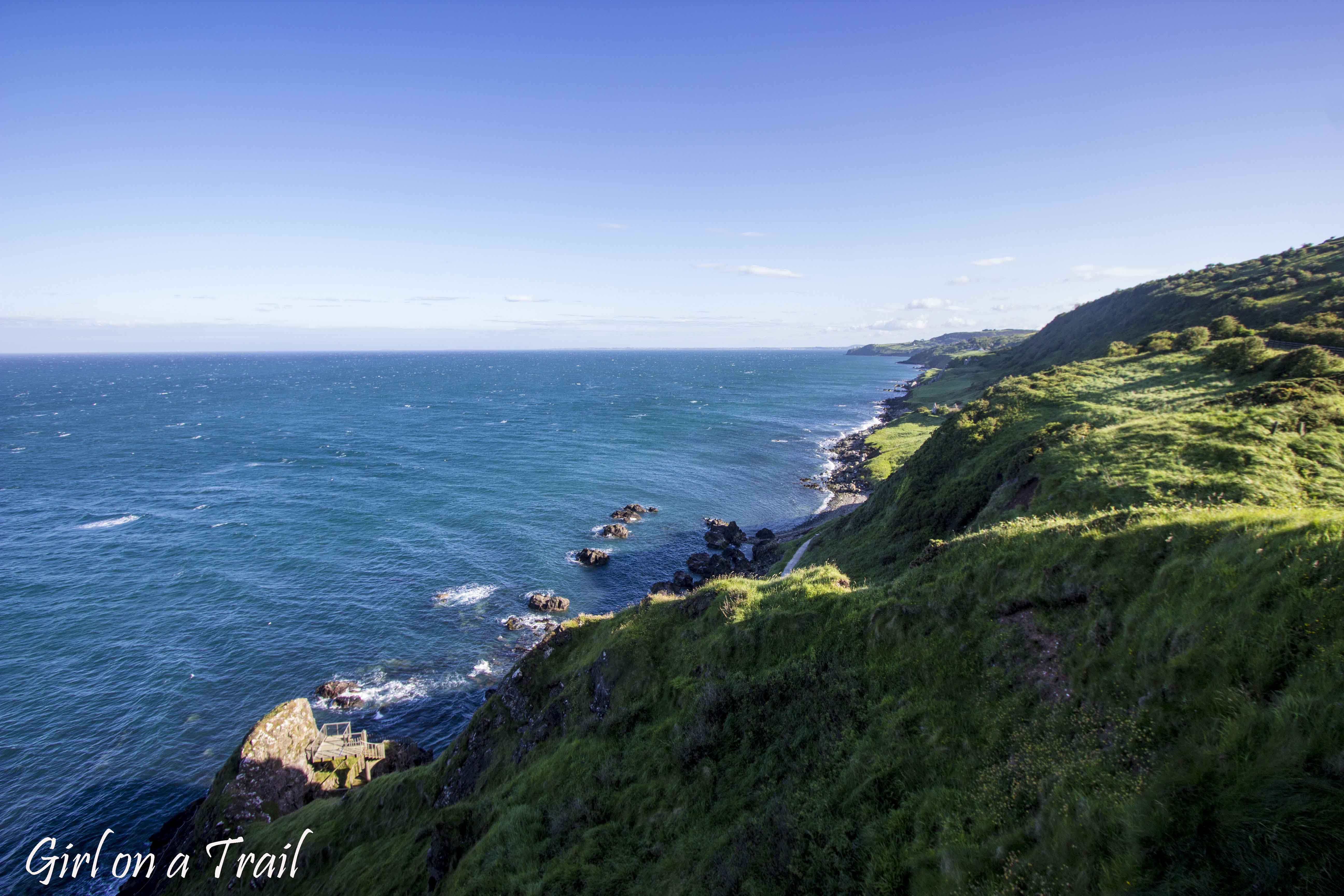
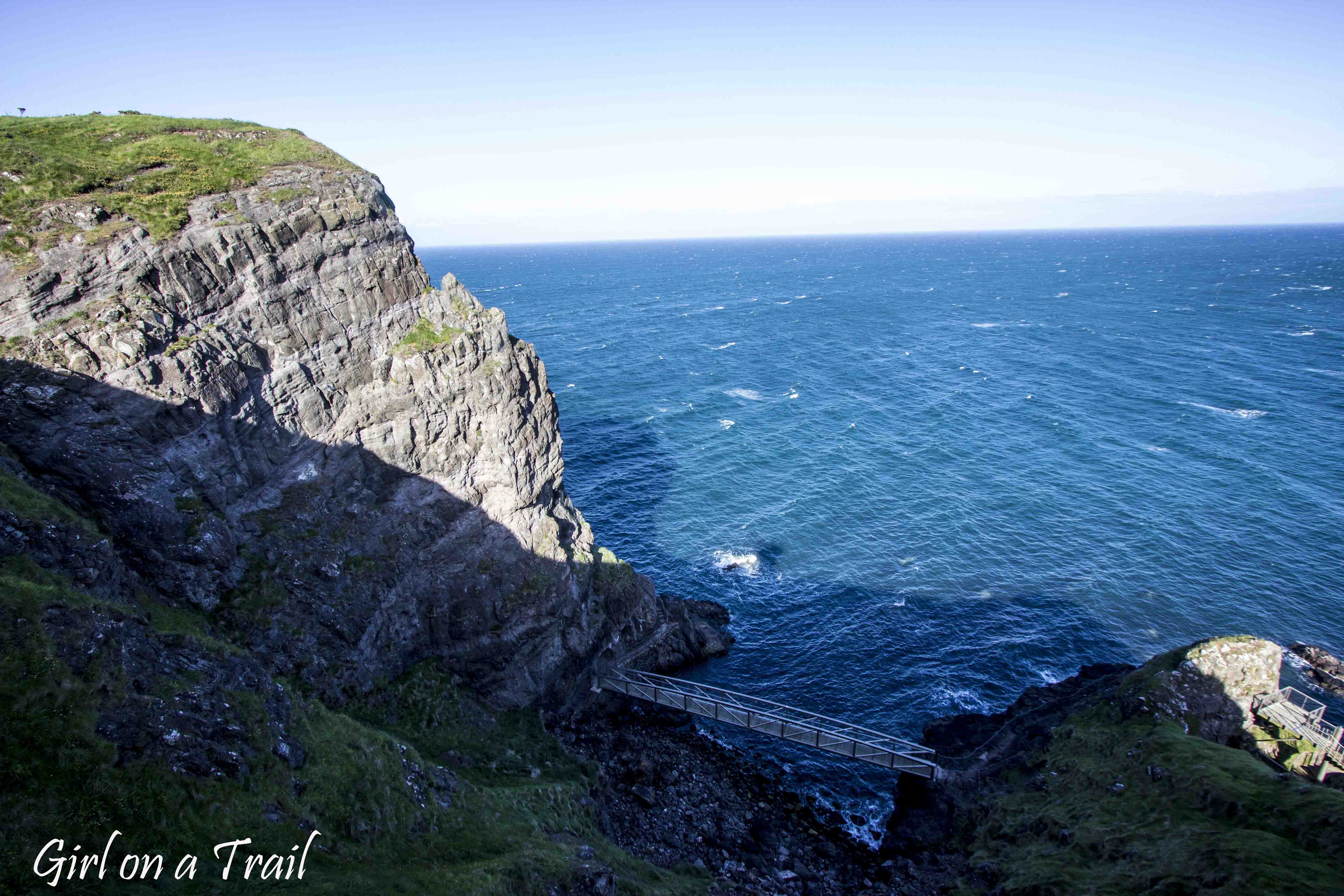
Taking a drive along the Causeway Coastal Route is a great idea for exploring Northern Ireland. Each stop along this route presents a fascinating history and incredible views. Some attractions promise a good dose of adrenaline, while others allow you to step back in time and discover the amazing history of Northern Ireland. However, every place offers spectacular views that will stay in your memory for a long time.


